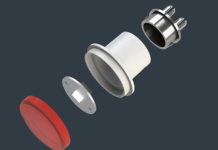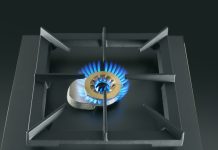
It is currently under discussion the myth of the so-called “natural logic” in the light of the changes that the new technologies of communication and information processing induce in the users’ way of operating, also in the ambit of domestic applications.
Roberto Papeschi
With the spreading of an increasingly pervasive use of electronic and information technologies in the most different product types, it is in course a deep change in the manner itself according to which takes place the interaction between user and devices, progressively more intelligent, which the first usually enjoys also in the domestic environment. Concerning this aspect, the experience contradicts the hypothesis that human beings act according to a predetermined script and that, in the behaviour of individuals, a whole of innate rules that derive from the DNA of the species prevail over those in constant evolution that spring from the adaptation to the environment and from learning.

The natural logic
According to the classic psychology, the individuals’ behaviour depends on a reasoning whose bases are ascribable to a “natural logic”. It is what, among the others, affirmed the psychologist Jean Piaget, who studied for a long time the development of children’s intelligence, reaching the conclusion that “from twelve to fifteen years spontaneously appears in human being the capability of developing a systematic thinking centred on the formulation of hypotheses and on the deduction of forecasts and implications not immediately connected with the experience and the concrete verification”. In the opinion of Piaget, then, the adult’s reasoning is “naturally” logic, having the form of the Aristotelian formal logic, based on the non-contradiction principle.
But the rules of the behaviour and then of the interaction between individuals and the instruments that they use do not depend in linear way on the thinking and on the characteristics of the mind, which in their turn cannot be traced univocally to the rules of the Aristotelian logic. Actually, at the base of the human behaviour there are instinctual and cognitive elements that interfere with the construction of meanings and that successively determine, even if in incoherent way as to the logic thinking, the actions that are performed.
It is by now acknowledged that the formal logic has its own validity in well delimited ambits, like those of the philosophic reasoning or of mathematics. In these domains the formal logic represents an instrument of general use to argue and to deduce, then it is not fortuitous that it was born in Greece as weapon of rhetoric and persuasion. The formal logic, however, is absolutely unsuitable for predicting in advance, as well as for explaining later on, the behaviour of individuals in their interaction with technological devices.
They have instead greater validity the conclusions of the most recent cognition science that, referring to the language structure, highlights those primitive concepts concerning the space-time relationships (up, down, in, inside, through, above, under, behind, before, after …) called “image schemes”, which would seem to own a universal nature constituting a bridge among language, vision, reasoning, experience and imagination. According to this approach the brain behaves as a “manipulator of symbols” memorized.
It is however worth noticing that such “image schemes”, resembling elements of behaviour programming, do not constitute an unchangeable cognitive heritage, in some way petrified in the mind of individuals, but they are subjected to a progressive evolution, even if slow, determined by the experience, which in its turns deals with the effects of the technological evolution.

The interface of “Mrs Mary”
In the first phase of diffusion of household appliances, until the Eighties, the interface of household appliances was constituted by some elementary devices of electromechanical type, among which the most diffused were the handles and the rotary selectors, the pushbutton and the lever switches, together with simple ON-OFF light signallers. As it can be easily assessed, all these devices refer to the “image schemes” of the cognitive science, in their turn enriched by further meanings deriving from experience and from the observation of some phenomena, like for instance the movement of the sun.
Therefore, the rotation of a knob has been universally associated to the meaning of a parameter variation and in particular of “increase” in the sense of clockwise rotation and of “decrease” when the rotation is anti-clockwise, and similarly, in the clock, the clockwise sense has the meaning of “forward” while its contrary has the sense of “backward”. Analogously are oriented the Cartesian axes, from left to right and from bottom to top, as also writing proceeds, it too from left to right and from top to bottom, at least in the Western world because in China the writing proceeds in inverse sense.
Quite similar associations are those that have progressively settled into the collective conscience referring to several other electromechanical devices and in particular to various light signallers that have found applications in the first generations of household appliances. In these cases it is assumed to identify a specific situation by means of the light colour: red for the ignition and for alarm situations, green for the regular operation, yellow in waiting conditions while the intermittent switching on is associated to a particular situation on which to draw the user’s attention.
These “image schemes” have been stably acquired by the cognitive system of users, to the extent of constituting a barrier to the introduction of systems of more advanced interface when, in the Eighties, technology made available for the household appliance designers alphanumeric displays and keyboards. Marketing experts were used, then, to rejecting the most innovative design proposals with the objection become historical that “Mrs Mary”, to whom they referred at that time as standard stereotype of the user, would not have accepted a household appliance whose functioning was determined and controlled with devices other than handles, buttons and elementary light signallers.

The remote control, the PC and the mobile phone
The turning point that has led to overcoming the resistances against innovation in the design of household appliances took place, after the Eighties, through contamination by technologies that had in the meantime successfully spread in other application fields. Among the various contributions, it was essential by importance the use of the remote TV control, with which the passage from analogue “image schemes” to digital ones took place.
In this device of very wide use, in fact, the programme selection is performed through a numerical keyboard while the variation of the volume, as well as of the other regulation parameters such as brightness and contrast ones, is carried out through +/- pushbuttons. The same signalling elements of the TV appliance provide, in addition to standard luminous devices, also for numerical displays to indicate both the number of the channel and the level of regulation parameters.

But if the TV remote control has been the disruptive element to undermine the logic of “Mrs Mary” applied to household appliances, in the following years other two technological innovations have contributed in enlarging the breach opened in the cognitive system of users, granting designers the widest space for the innovation of domestic products: the personal computer and the mobile phone.
The personal computer has significantly widened the dimension of the dialogue between user and technological device. For an effective dialogue, in fact, it was necessary the availability of a powerful interface, constituted in a first phase by an alphanumeric keyboard and a display. Afterwards, with the Macintosh by Apple, it was defined an even more innovative modality for the man-machine interaction, with the use of a graphic interface constituted by drop-down menus and icons that can be selected and dragged by the mouse.
In its turn the mobile phone, in even more recent times, has promoted a further progress in the definition of the interaction interface between individuals and technological systems. It is in the mobile phone, today used by millions of individuals all over the world, that are present all the possible interaction modalities, from the optical to the acoustic ones, from the use of either physical or virtual keyboards up to the “touch” interaction modality through a pressure localized on the display or a directional light touch of the same. It is also worth noticing that historically, among the most innovative technologies for the interface of products, also the vocal ones have been experimented.
All that happened in the automotive industry, with examples of vocals signals of the alarm states, like that concerning the unfastening of safety belts or the reserve state of the fuel tank. These experimentations, however, did not meet the users’ favour and were afterwards abandoned in favour of elementary sound signals and luminous messages on the vehicle display. The same happened in the sector of household appliances, with the experimentation of vocal synthesis instruments applied in particular in the field of washing products, but also in this case unsuccessfully.

Smart household appliances
Over the last ten years the evolution of household appliances has been characterized by the growing availability of micro-electronic technologies and of electromechanical actuators, together with a broad family of sensors for the monitoring of several parameters, from temperature to pressure, to the quantity of detergents and of washing water, to the load weight, to the turbidity of the waste water, the drum speed and vibrations. All that has allowed the design of “intelligent” household appliances in the two different typologies of “automatic machines” and of ”programmable systems”.
Washing appliances, washing machines and dishwashers, typically belong to the category of “automatic machines”, where the part concerning the execution and the regulation of the process holds a prevailing role in comparison with the interaction with the user. These household appliances make use of numerous sensors for the detection of the quantity or of the weight of laundry and dishes, of the quantity and of the temperature of water, of the dirtiness level, of the rotation speed and of the drum vibrations. According to the detected parameters, the household appliance can set the programme in automatic way, determining the quantities of detergent and water, the washing temperature and the duration of the working cycle.
To the opposite side, of “programmable systems”, belong on the contrary the cooking appliances. In this case, in fact, the direct interaction with the user is much more extended than in washing systems because the endless varieties of the food preparation processes are not suitable for being reduced to simple procedures of automatic processes. Even if particular automation systems can be an aid, by simplifying some operations, technology cannot substitute the direct presence of the user, both in the phase of the cooking parameter setting and in the successive control phases.
Concerning this, it is also worth noticing that the washing operations of the linen, of clothes and of dishes are not particularly motivating for the user, unlike what happens with cooking, which in many cases involves not only those who generally manage domestic activities but also individuals of both sexes who like taking care of the food preparation, especially on social occasions. In these conditions the cooking process assumes customized characteristics, which correspond to the preferences of single users and for this reason require a wide freedom of choice.
That does not mean, however, that there is not room for flexible automation aimed at the correct execution regulation and control of the programmed operations, especially concerning the management of ovens. Automation that in this case is subordinate to a programming of specific recipes, available in the memory of the household appliance processor and of which the general parameters of the related cooking cycle have already been defined. This can also include a sequence of different phases, each of them characterized by a particular temperature and by a definite duration. Besides, due to the great involvement of the user in the food preparation, the user must permit the most different interventions at any time of the cooking process already programmed and started.

A particular case
In comparison with the two typologies of washing and cooking appliances, which can be respectively classified as “automatic machines” and “programmable systems”, the refrigerator constitutes a case apart. As it is conceived today, in fact, the refrigerator represents a complex thermodynamic machine, but characterized by an absolutely modest interaction with the user. The matter is however different if we reason in perspective considering the high-end range of refrigerators and the possible future developments, in the light of the researches in course by the main producers of household appliances.
There is in fact a precise market hypothesis that provides for the convergence of two rising trends into the high end refrigerator, respectively in the sector of the food distribution and in that of the domestic management. This hypothesis takes into account the growing diffusion of pre-cooked and pre-packaged foods, which has led to initiatives of collaboration between the producers of the food industry and the manufacturers of household appliances in the definition of preservation modalities and of recipes for the food preparation.
It becomes so realistic to imagine that the refrigerator becomes the alimentary “warehouse” or better the “computerized pantry” of the house. In this case it will be possible to acquire the data of the food packages that are stored in the refrigerator itself by means of a reader of bar codes. In other words, it will be possible to perform an automatic management of the “load” and of the “unload” of foods, of expiry dates and of the signals for the recovery of stocks, as well as of the related preparation recipes.
In this case, the user interface will not be able to do without a forefront display and an extended keyboard, which will complete the optical reader of bar codes. Such evolution of the household appliance is on the other hand consistent with the parallel development of domotics, where already today advanced house automation criteria match solutions of environmental monitoring for the energy saving, for safety and surveillance.



